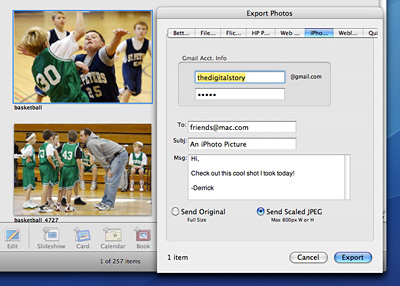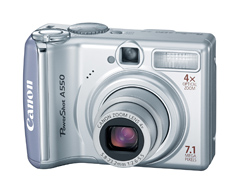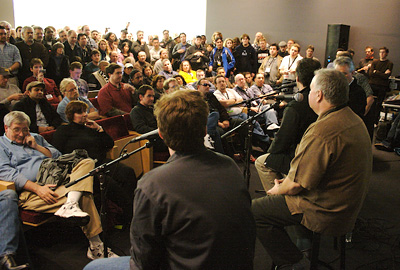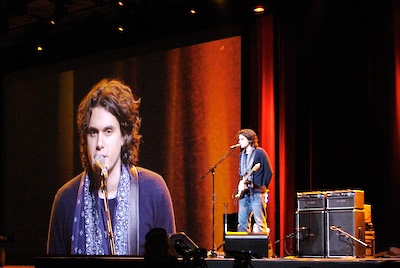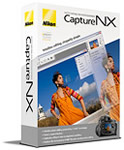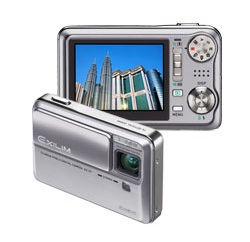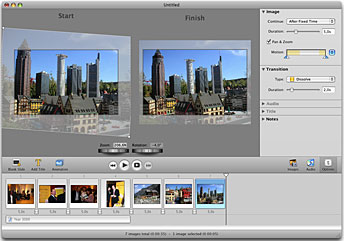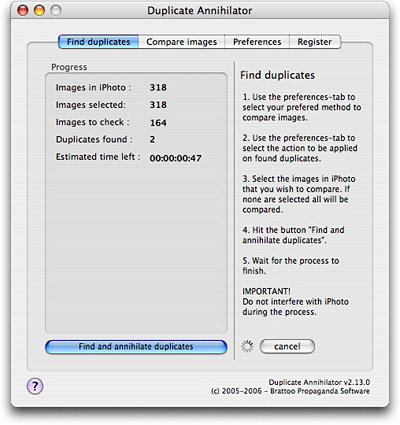
People often discover unexpected bounty in their iPhoto libraries: duplicate images. This double-the-joy scenario can happen accidentally in a variety of ways, but the prognosis is always the same -- extra pictures taking up additional hard disc space.
Duplicate Annihilator by Brattoo Propaganda Software will identify mirror images and remove them from your library. Duplicate Annihilator scans your entire library and takes one of two actions. Either you can automatically move the dups to the trash can, or you can have them identified by the comment "duplicate" for easy searching and subsequent action. Either way, this $7.95 shareware available from Brattoo Propaganda Software is an affordable way to slim down your iPhoto library.
Technorati Tags: digital photography, product review, The Digital Story
